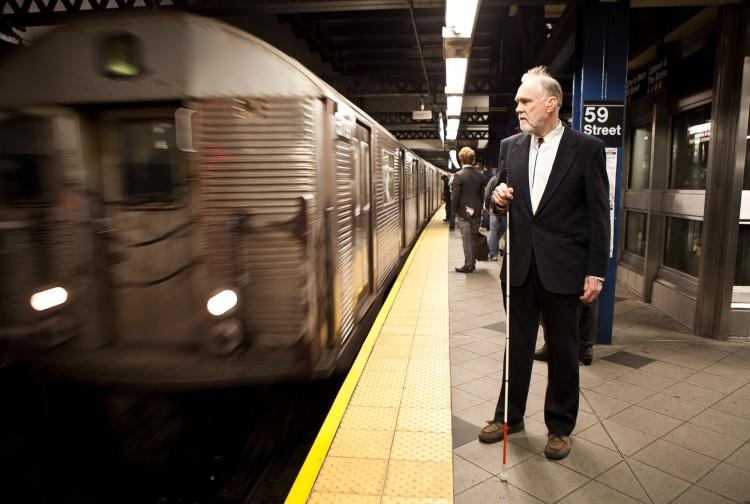NEW YORK—Learning to navigate the maze of underground tunnels connecting the New York City subway—uptown, downtown, Queens-bound, local, express, nighttime hours, and construction detours—is enough to confuse any New Yorker.
Imagine you were trying to overcome all these obstacles, but you could not use your sense of sight.
“It is so natural, I don’t even know how I do it. I am sure part of it is memory,” Ken Stewart said while touring Columbus Circle subway station on Tuesday. Stewart is one of the estimated 363,000 New Yorkers with severe visual impairment, according to VISIONS/Services for the Blind and Visually Impaired.
Stewart uses a long cane to help him get around the city, but his attention to a combination of visual, tactile, and audio cues are another asset.
He is legally blind but has extremely limited vision allowing him to see mostly color contrast and limited light. Stewart uses color contrast—the difference between light and dark—to help him differentiate between objects. “The color is not as important as the percentage of contrast—the higher, the better,” he said.
Background noises for sighted people, such as the flipping of the turnstile or swiping of a metro card, provided crucial audio cues for Stewart. They help orientate him, especially at stations he is less familiar with or stations with large open areas such as Columbus Circle or Times Square.
Detectable warning strips, the yellow bumps located at the edge of many subway platforms, provide a key tactile cue for Stewart, warning him where the platform ends.
Karen Gourgey, who has been blind since birth, also finds the value in the detectable warning strips. She is, however, disappointed that they are not yet in place at all stations. “In terms of the blind and visually impaired community, we need them in every single station—without exception.”
Gourgey, who is the director at the Computer Center for Visually Impaired People at Baruch College, CUNY, uses a guide dog instead of a long cane. “I like using the dog in the subways, especially if I am going to an unfamiliar station.”








